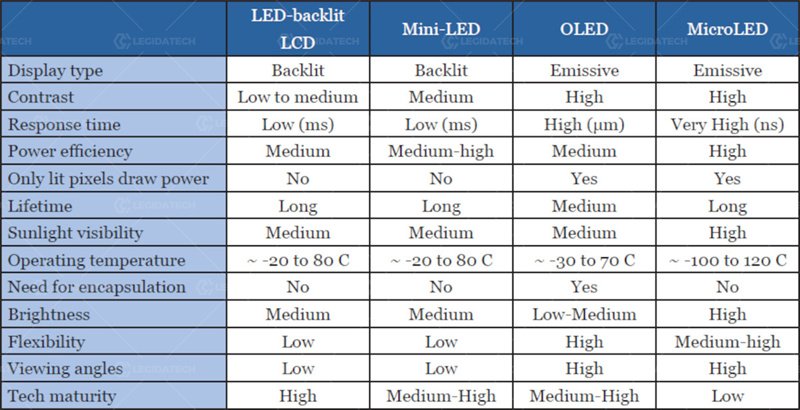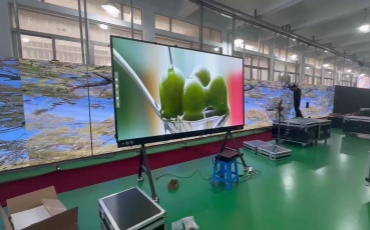Introduction: The Evolution of Display Innovations
In the rapidly advancing realm of display technologies, Mini-LED and Micro-LED have emerged as revolutionary forces, poised to redefine how we engage with digital content.
As leaders in LED screen innovation, we dive deep into these next-gen display solutions—micro-scale LEDs and self-emissive pixel tech—to uncover their impact on brightness, efficiency, and visual fidelity.

Mini-LED: Precision Backlighting & Energy-Saving Brilliance
Mini-LED technology bridges the gap between traditional LED systems and modern advancements.
By utilizing ultra-compact LED chips, high-density Mini-LED arrays deliver unmatched local dimming, deeper blacks, and vibrant color accuracy.
This energy-efficient display innovation consumes less power while achieving superior brightness, making it ideal for gaming monitors, slim laptops, and 4K televisions.
With dynamic backlight zones, Mini-LED minimizes halo effects, enhancing clarity for professional video editing and immersive cinematic experiences.

Micro-LED: Self-Emissive Pixels & Unrivaled Image Quality
Micro-LED technology pushes boundaries with self-lighting pixels and microscopic LED configurations.
Unlike LCD panels or OLED screens, Micro-LED displays eliminate backlight dependency, enabling true-to-life blacks, instantaneous response times, and ultra-HDR performance.
These burn-in-resistant screens outperform OLED in energy efficiency and durability.
While Micro-LED production costs remain high, their potential in AR/VR headsets, luxury automotive HUDs, and cinema-grade displays is groundbreaking.

Real-World Applications: Gaming, Automotive & Beyond
Gaming Revolution: Premium Mini-LED gaming monitors elevate game play with shadow precision and color depth.
Future Micro-LED VR gear promises 16K resolution and zero latency for unparalleled immersion.
Smart Mobility: Luxury vehicles integrate Mini-LED dashboards for crisp navigation, while Micro-LED windshield projections enhance driver safety with ultra-bright alerts.
Technical Comparisons: Mini-LED vs. OLED & Micro-LED vs. LCD
– Mini-LED vs. OLED: OLED excels in contrast but risks burn-in; Mini-LED screens offer durability and cost efficiency for large-format TVs and professional monitors.
– Micro-LED vs. LCD: LCD displays suffer from motion blur, while self-illuminating Micro-LEDs deliver infinite contrast and speed for home theater setups.

Market Trends: Why Mini-LED and Micro-LED Are Dominating Tech Headlines
The global demand for high-performance displays is surging, driven by applications in gaming monitors, electric vehicles (EVs), and smart home devices.
According to industry reports, Mini-LED adoption grew by 120% in 2023, while Micro-LED prototypes are attracting billions in R&D investments from tech giants like Samsung and Apple.
These advanced LED technologies are not just buzzwords—they’re reshaping how consumers experience 4K streaming, VR gaming, and autonomous driving interfaces.
Consumer Guide: Choosing Between Mini-LED and Micro-LED Displays
For gamers and content creators, Mini-LED monitors offer a sweet spot with local dimming zones and 1000+ nits brightness at accessible prices.
Brands like ASUS and LG are launching Mini-LED gaming TV sunder $2,000.
Meanwhile, Micro-LED’s self-emissive pixels make it ideal for luxury home theaters—though its current $20,000+ price tag targets early adopters.
Pro tip: Pair Mini-LED screens with HDR10+ content for cinematic contrast, while Micro-LED’s infinite contrast shines in dark-room environments.

Sustainability Spotlight: Energy Efficiency and Eco-Impact
Mini-LED’s energy-saving design reduces power consumption by 30% compared to traditional LEDs, aligning with global green tech initiatives.
For example, Tesla’s Mini-LED dashboard displays in Model S Plaid cut energy use while delivering crisp visuals. Micro-LED’s durability also minimizes e-waste—its 50,000-hour lifespan doubles OLED’s longevity.
As governments push eco-friendly display standards, both technologies are poised to lead the sustainable screen revolution.
Future Predictions: What’s Next for LED Innovation?
By 2025, analysts predict Micro-LED manufacturing costs will drop 40%, enabling mass adoption in fold able smartphones and wearable AR glasses.
Startups like PlayNitride are developing ultra-thin Micro-LED panels for Samsung’s next-gen Galaxy Z Fold.
Meanwhile, Mini-LED advancements will focus on 8K resolution scaling and AI-driven backlight optimization.
The ultimate goal? Merging Mini-LED’s affordability with Micro-LED’s pixel precision to create hybrid displays for mainstream markets.
Industry Challenges: Scaling Production and Consumer Education
Despite their potential, Micro-LED mass production faces hurdles like micron-level alignment errors and low yield rates(currently <50%).
Companies like Sony are investing in laser transfer technology to streamline fabrication. For Mini-LED, educating consumers about dimming zone counts vs. peak brightness remains critical.
A recent survey found 60% of buyers prioritize “Mini-LED for gaming” over specs—a gap brands must bridge through interactive demo campaigns.
Conclusion: Pioneering the Future of Visual Tech
The rapid evolution of Mini-LED and Micro-LED technologies is reshaping industries. From high-performance gaming ecosystems to smart automotive interfaces, they offer unparalleled visual excellence.
Mini-LED, with its ultra – compact LED chips (100 – 300 μm), enhances dynamic backlight control and local dimming precision. It has become a staple in gaming monitors and 4K TVs, delivering deeper blacks and vibrant HDR visuals.
Meanwhile, Micro-LED (sub – 100 μm chips) eliminates traditional backlights through self – emissive pixels.
This enables true – to – life contrast, nanosecond response times, and energy – efficient brilliance for applications such as AR/VR headsets and luxury car HUDs.
Despite their transformative potential, Micro-LED manufacturing complexity persists. Issues like micron – level alignment challenges and high production costs remain a hurdle.
However, innovations like laser transfer technology and MIP packaging are reducing mass transfer costs by 30%.
On the other hand, Mini-LED advancements focus on AI – driven optimization and quantum dot integration to boost color accuracy and peak brightness.
At ليجيداتيك, we lead the charge in delivering next-level display solutions to a global audience.
FAQs: Demystifying Advanced Display Tech
- What distinguishes Mini-LED from Micro-LED?
– Mini-LED: Optimizes backlight control; Micro-LED: Enables pixel-level self-emission for ultimate precision.
- Are these technologies affordable?
– Mini-LED pricing is dropping rapidly; Micro-LED panels remain premium but will become accessible with scalable manufacturing.
- Best uses for creative professionals?
– Mini-LED monitors excel in color accuracy; Micro-LED’s HDR capabilities will dominate high-end video production.
Author:Amy





